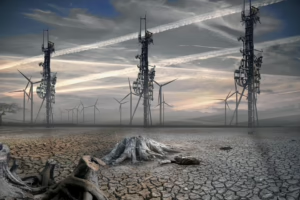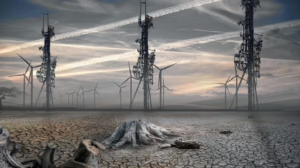Trade and Transformation: How Commerce Fueled Global Interactions
Introduction
Commerce has always acted as a cornerstone of human civilization, providing the foundation for economic interaction and cultural exchange. From the spice routes of ancient civilizations to the digital marketplaces of today, trade has both reflected and influenced societal structuring and transformation. As nations exchanged goods, they also exchanged ideas, technologies, and cultural practices. This article explores the multifaceted role that trade has played in shaping global interactions throughout history, delving into the underlying mechanisms of this transformation.
The Early Foundations of Trade
The Emergence of Trade Networks
The roots of trade can be traced back to ancient societies where barter systems prevailed. As communities grew and developed, so did the complexity of trade networks. The earliest examples come from civilizations such as the Sumerians and Egyptians, who established trade routes that connected various regions through the exchange of goods like grains, textiles, and metals. This system of bartering led to the development of currency, which significantly streamlined commerce.
The Silk Road: A Classical Example
One of the most iconic trade networks in history is the Silk Road, which connected Asia with Europe. This route was not just a physical path for commodities like silk, spices, and precious stones, but also a corridor for cultural exchange. Merchants, travelers, and scholars traveled along these routes, leading to a blend of ideas, religions, and customs. The transmission of technologies, like papermaking and gunpowder, demonstrates how commercial interactions sparked intellectual transformations across borders.
The Age of Exploration
Motivations for Exploration
The Age of Exploration, spanning the 15th to the 17th century, represents a pivotal point in global commerce. European powers like Spain, Portugal, and later the British and Dutch sought direct trading routes to Asia’s riches, motivated by the quest for spices, gold, and wealth. The new maritime technology, including maps and navigational tools, enabled long-distance sea travel, effectively transforming trade dynamics.
The Columbian Exchange
Christopher Columbus’s 1492 voyage marked the beginning of what would be known as the Columbian Exchange, a massive transfer of goods, people, and ideas between the Americas and the Old World. The introduction of crops such as potatoes and maize to Europe and the exchange of animals like horses and cattle to the Americas transformed agriculture and diet on both continents. This exchange not only altered economic structures but also led to profound demographic shifts, including the tragic consequences of disease on Indigenous populations.
The Industrial Revolution
Economic Shifts
The Industrial Revolution, beginning in the late 18th century, radically transformed commerce. As mass production became possible through mechanization, the scale of trade expanded. New markets emerged, leading to the establishment of global supply chains. This era also saw the rise of consumer culture, as goods that were once luxuries became available to broader swathes of the population.
Transportation Revolution
Innovations in transportation, such as the steam engine and railways, drastically cut the cost and time required for goods to move between distant locations. Shipping became faster and more efficient, facilitating bulk trading and encouraging the rise of multinational corporations. The Suez Canal, opened in 1869, further exemplified this trend, shortening maritime routes and opening doors for European powers to exploit resources in Asia and Africa.
Globalization in the 20th Century
The Bretton Woods System
The conclusion of World War II brought about significant changes to the world economy. The Bretton Woods Conference in 1944 established a new international monetary system aimed at fostering global trade stability through fixed exchange rates. This system significantly impacted global commerce, leading to increased interdependence among nations.
Rise of Multinational Corporations
The latter half of the 20th century saw the rise of multinational corporations (MNCs) that operated on a global scale. Companies such as Coca-Cola, McDonald’s, and General Electric exemplified how businesses could leverage international trade to reach new markets, resulting in a blending of cultures but also raising questions about cultural imperialism and economic disparity.
The Digital Revolution and E-Commerce
The Internet Era
The turn of the 21st century ushered in the digital revolution, fundamentally altering commerce and global interaction. The advent of the internet allowed for unprecedented access to information and commerce. E-commerce platforms like Amazon and Alibaba changed consumer behavior, making it possible for individuals to purchase goods from virtually anywhere in the world.
Global Supply Chains
Global interconnectedness became even more pronounced with the development of sophisticated supply chains that stretched across multiple countries. Industries became reliant on outsourcing production to regions where labor costs were lower, raising concerns about labor rights and environmental sustainability.
Trade Agreements and Global Governance
The Role of Trade Agreements
In the post-World War II era, trade agreements such as the General Agreement on Tariffs and Trade (GATT) and later the World Trade Organization (WTO) were established to reduce trade barriers and govern international commerce. These organizations aimed to create a more stable trading environment, enabling countries to negotiate tariffs and establish trade policies that favored mutual benefits.
Economic Blocs
Economic blocs like the European Union (EU) and the North American Free Trade Agreement (NAFTA) further facilitated trade by removing tariffs among member nations. These alliances transformed regional politics and economies, making trade not just an economic issue but also a geopolitical strategy.
Challenges and Opportunities
Trade Wars and Protectionism
As global interdependence has increased, so too have tensions. Recent trade wars, particularly between the United States and China, have introduced significant economic uncertainties. Protectionist policies can disrupt established supply chains and ultimately hinder the free flow of goods, raising concerns about the fragility of an interconnected global economy.
The Role of Technology
Conversely, technological advancements continue to present opportunities for commerce. Blockchain technology, for instance, enhances transparency in supply chains, potentially reducing fraud and streamlining operations. Innovations in fintech (financial technology) also offer new avenues for funding and financial services, particularly in developing nations.
The Future of Trade and Cultural Exchange
Sustainable Trade Practices
Looking ahead, there is a growing emphasis on sustainable trade practices. Climate change and environmental degradation call for models that prioritize ecological sustainability alongside economic growth. This shift presents an opportunity for innovation and collaboration among nations, potentially leading to a more equitable and responsible global trading system.
Cultural Renaissance through Trade
As trade continues to evolve, cultural exchanges will remain at its core. The way goods are produced, marketed, and shared will inevitably influence societal norms and values. Social media and digital platforms empower grassroots movements and shared narratives, fostering a cultural renaissance that transcends borders.
Conclusion
Trade is not merely an exchange of goods; it is a dynamic driver of transformation that has shaped the contours of human civilization for millennia. As we stand at the crossroads of innovation and tradition, the legacy of commerce serves as both a lesson and a guide. It reminds us that global interactions are not just informed by economic interests but also by the rich tapestry of cultural exchange, cooperation, and shared challenges. The future of trade and transformation promises to be a thrilling journey, full of complexity and potential.
References
- The Silk Road and Cultural Exchange.
- The Impact of the Columbian Exchange on Global Commerce.
- Innovations during the Industrial Revolution and their Effects on Trade.
- The Bretton Woods Agreement and its Role in Modern Trade.
- The Rise of Multinational Corporations in the Global Economy.
- E-commerce and the Digital Economy.
- Trade Agreements and Their Economic Impact.
- The Role of Technology in Modern Supply Chains.
- Sustainable Trade Practices and the Future of Global Commerce.
This brief overview outlines the fundamental themes surrounding trade and transformation throughout history. A comprehensive article would delve into each section with greater detail, extensive examples, and modern footnotes sourced from credible academic and historical databases.


























Add Comment